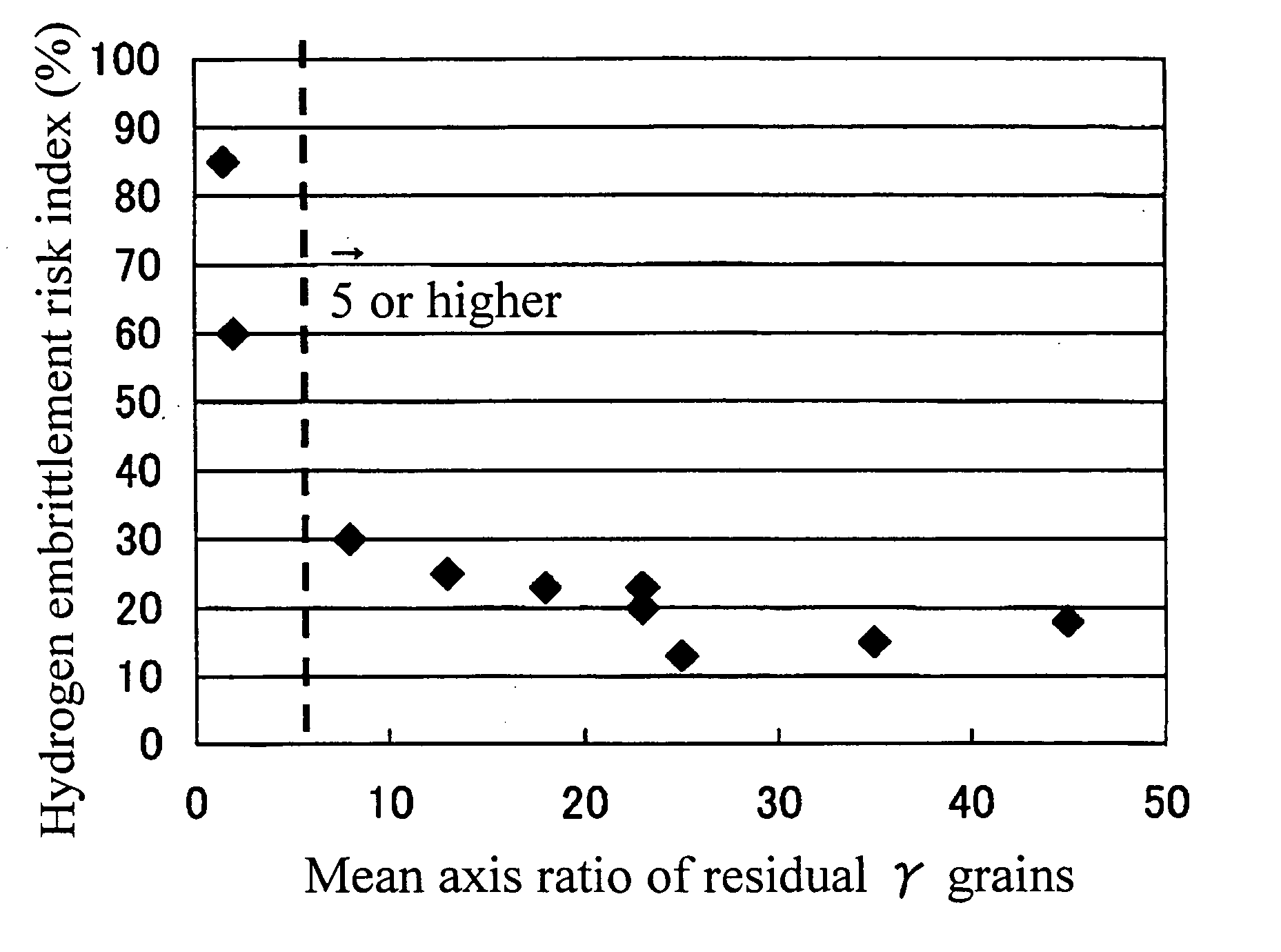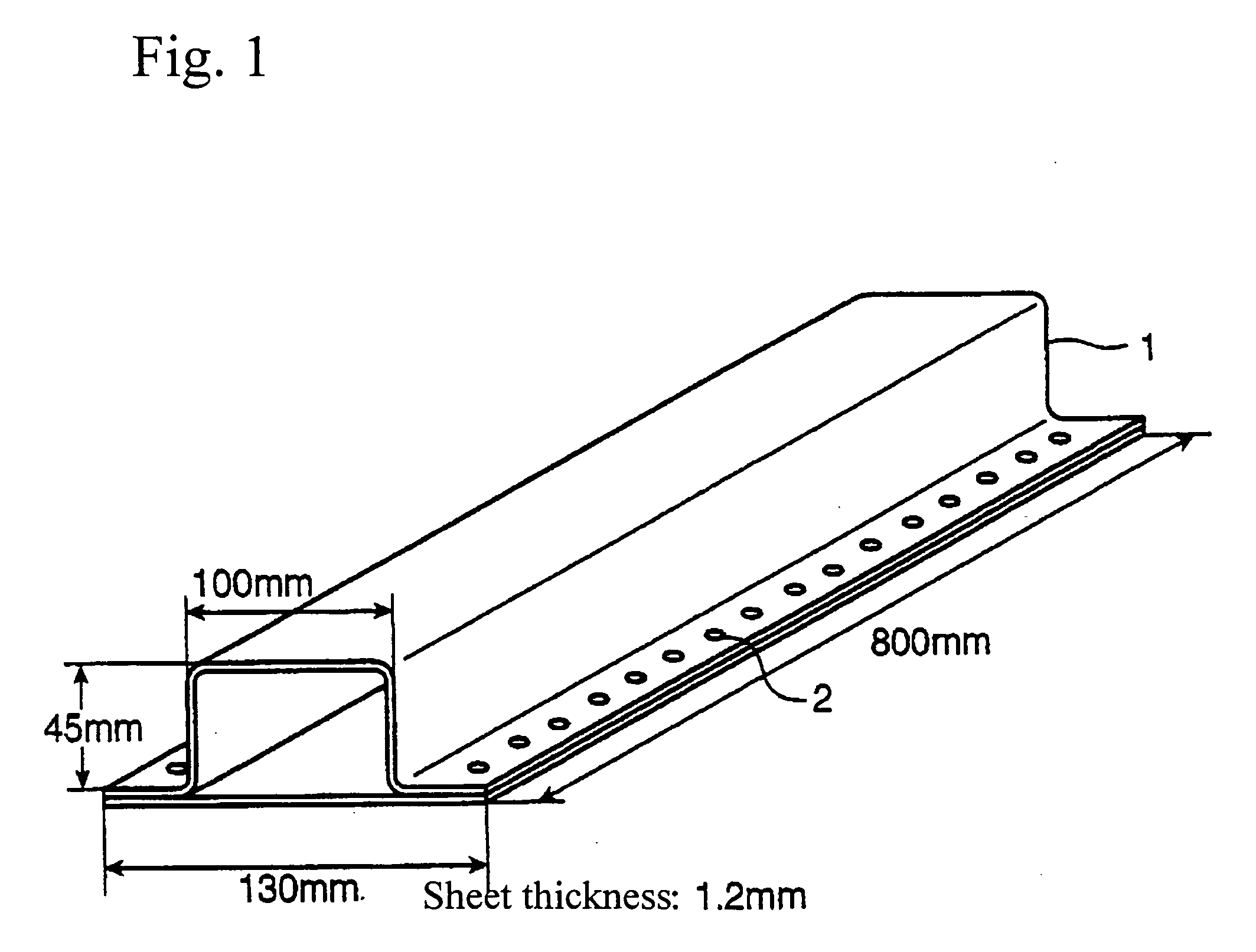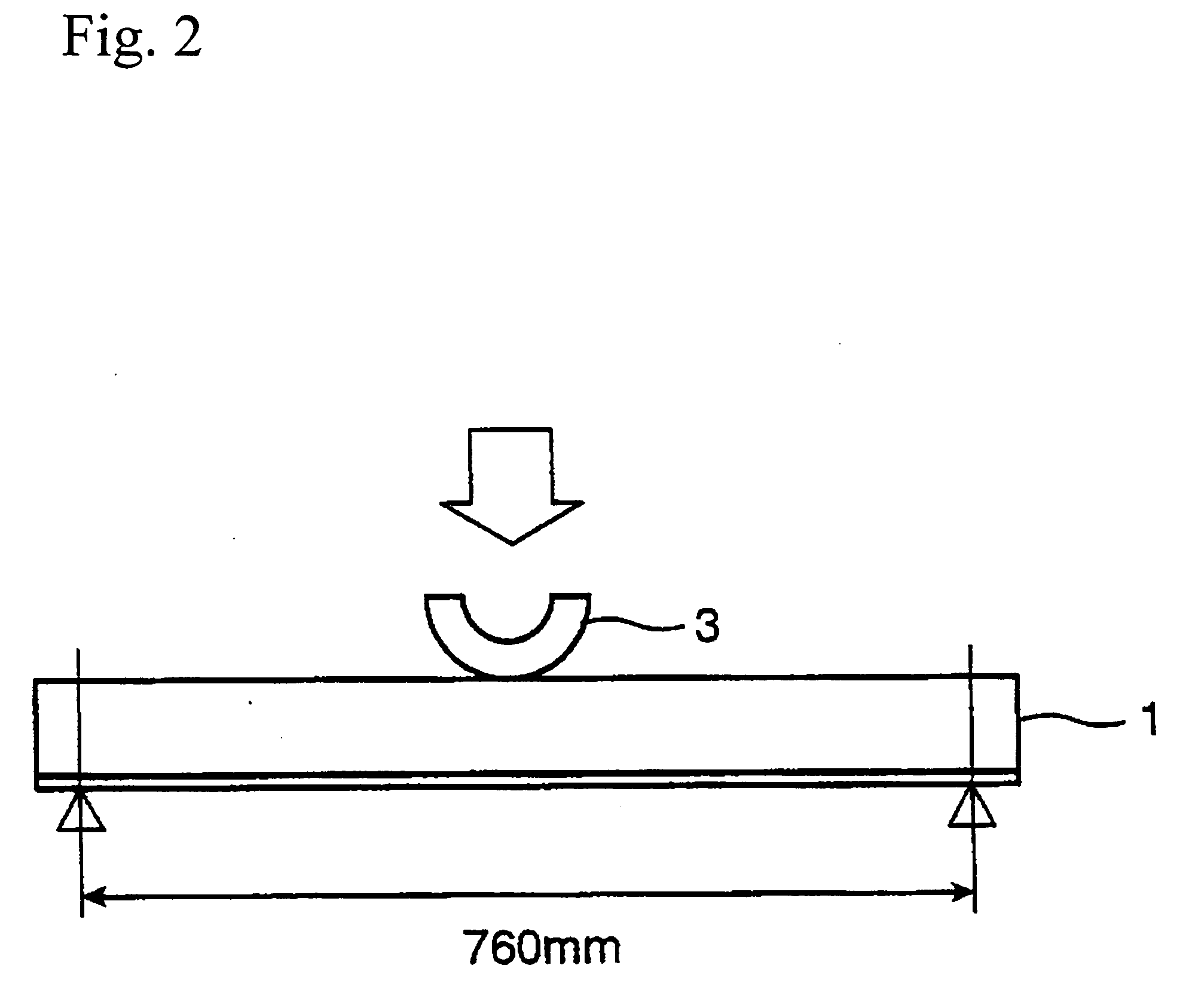High strength thin steel sheet having high hydrogen embrittlement resisting property and high workability
- Summary
- Abstract
- Description
- Claims
- Application Information
AI Technical Summary
Benefits of technology
Problems solved by technology
Method used
Image
Examples
first embodiment
[0039] The first high strength thin steel sheet according to the present invention is constituted from higher than 0.25 and up to 0.60% of C (contents of components given in terms of percentage in this patent application all refer to percentage by weight), 1.0 to 3.0% of Si, 1.0 to 3.5% of Mn, 0.15% or less P, 0.02% or less S, 1.5% or less (higher than 0%) of Al, 1.0% or less (higher than 0%) of Mo and 0.1% or less (higher than 0%) of Nb, while iron and inevitable impurities making up the rest, and is characterized in that:
(i) the metal structure after the forming process contains: 1% or more residual austenite;
80% or more in total of bainitic ferrite and martensite; and
9% or less (may be 0%) in total of ferrite and pearlite in terms of the proportion of area to the entire structure, and
the mean axis ratio (major axis / minor axis) of the residual austenite grains is 5 or higher; and
(ii) the steel contains a specified amount of Mo and / or Nb.
[0040] The requirements described...
second embodiment
[0081] The second high strength thin steel sheet according to the present invention is constituted from higher than 0.25% and up to 0.60% of C (contents of components given in terms of percentage in this patent application all refer to percentage by weight), 1.0 to 3.0% of Si, 1.0 to 3.5% of Mn, 0.15% or less of P, 0.02% or less of S, 1.5% or less (higher than 0%) of Al while iron and inevitable impurities constitute the rest, wherein: (i) the structure after the forming process comprises:
1% or more residual austenite;
mean axis ratio (major axis / minor axis) of the residual austenite grains is 5 or higher;
80% or more in total of bainitic ferrite and martensite; and
9% or less (may be 0%) in total of ferrite and pearlite in the proportion of area to the entire structure, and
(ii) the steel contains specified amount of Cu and / or Ni.
[0082] The requirements (i) have the reasons as described above.
[0083] The requirement (ii) described above has the reason as follows.
[0084] Spec...
third embodiment
[0100] A third high strength thin steel sheet according to the present invention is constituted from higher than 0.25 and up to 0.60% of C (contents of components given in terms of percentage in this patent application all refer to percentage by weight), 1.0 to 3.0% of Si, 1.0 to 3.5% of Mn, 0.15% or less of P, 0.02% or less of S, 1.5% or less (higher than 0%) of Al, while iron and inevitable impurities making up the rest,
wherein: (iii) the structure satisfies the following requirements after forming:
1% or more residual austenite; the mean axis ratio (major axis / minor axis) of the residual austenite grains is 5 or higher;
mean length of minor axes of the residual austenite grains is 1 μm or less; and
minimum distance between residual austenite grains is 1 μm or less.
[0101] When the metal structure is controlled as described above, hydrogen embrittlement resisting property of the high strength thin steel sheet can be sufficiently improved without adding much alloy elements.
[0...
PUM
| Property | Measurement | Unit |
|---|---|---|
| Length | aaaaa | aaaaa |
| Fraction | aaaaa | aaaaa |
| Fraction | aaaaa | aaaaa |
Abstract
Description
Claims
Application Information
 Login to View More
Login to View More - R&D
- Intellectual Property
- Life Sciences
- Materials
- Tech Scout
- Unparalleled Data Quality
- Higher Quality Content
- 60% Fewer Hallucinations
Browse by: Latest US Patents, China's latest patents, Technical Efficacy Thesaurus, Application Domain, Technology Topic, Popular Technical Reports.
© 2025 PatSnap. All rights reserved.Legal|Privacy policy|Modern Slavery Act Transparency Statement|Sitemap|About US| Contact US: help@patsnap.com



